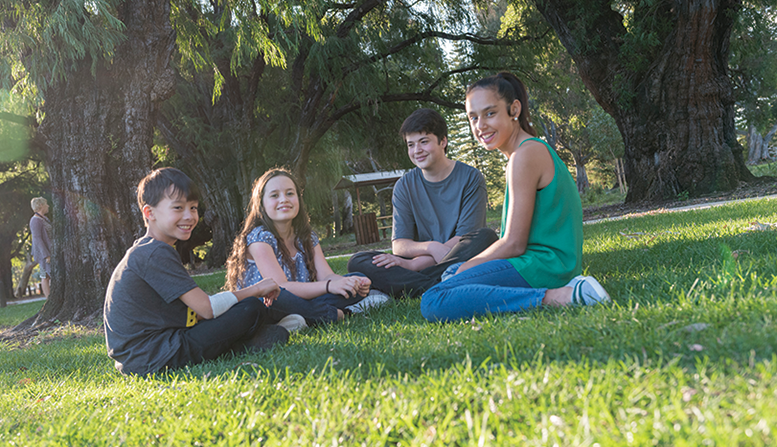Search

News & Events
Young ambassadors keep researchers on their toesFlat out trying hard to keep up with the ever-changing threats from cyberbullying, The Kids Research Institute Australia counts itself fortunate to have youth on its side.
Research
School-based bullying intervention programs in Australia and New ZealandKevin Natasha Helen Jacinta Runions Pearce Monks Francis BSc (Hons) BEd MA PhD PhD (Public Health), PostGrad Dip (Health Promotion), BApp Sc MPH BA(
Research
Why do Victims become Perpetrators of Peer Bullying? Moral Disengagement in the Cycle of ViolencePrevious studies have shown that there is overlap between victimization and the perpetration of bullying, and social and motivational variables are known to mediate this relationship. However, the effects of different moral disengagement strategies have not been studied, despite the fact that they exert a major influence on aggressive behavior.
Research
How does the school built environment impact students’ bullying behaviour? A scoping reviewSchool bullying is a public health concern affecting the physical and mental health of children and young people. While school-based interventions to prevent bullying have been developed internationally, the effectiveness of many interventions has been mixed and modest.
Research
‘It’s All About Context’: Building School Capacity to Implement a Whole-School Approach to BullyingStudent bullying behaviours are a significant social issue in schools worldwide. Whilst school staff have access to quality bullying prevention interventions, schools can face significant challenges implementing the whole-school approach required to address the complexity of these behaviours.
Research
Parental Challenges, Facilitators and Needs Associated with Supporting and Accepting Their Trans Child’s GenderParental support is strongly correlated with protective factors for trans youth yet most experience parental rejection or ambivalence regarding their gender. Many parents report a desire to support their child but indicate lack of understanding and support as key barriers. We aimed to develop a nuanced understanding of the challenges and facilitators experienced by Australian parents in developing understanding, support and acceptance of their child’s gender and their needs to do so.
Research
Adolescent education outcomes and maltreatment: The role of pre-existing adversity, level of child protection involvement, and school attendanceMaltreated children are at high risk for low educational achievement, however few studies have accounted for confounding risk factors that commonly co-occur (including child, family and neighbourhood risk factors) and results have been mixed, particularly for adolescents.
Research
A social-ecological framework for understanding and reducing cyberbullying behavioursWhile the CFS findings suggest the combined whole-school response to the mediators was somewhat effective, the study wasn't able to determine the relative...
Research
Strategies for coping and dealing with lateral violence among Aboriginal people living in south-east AustraliaLateral violence, a group of behaviours directed towards people of the same group, is considered endemic among Aboriginal people. Behaviours include bullying, gossiping, isolation or exclusion of certain group members, and challenges to one’s Aboriginal identity. Lateral violence impacts all aspects of one’s life. Due to its pervasiveness, this qualitative study investigated strategies employed by Aboriginal people to deal with lateral violence.
Research
The moral domain in peer relationships: opportunities for interventions to prevent bullyingPrevious research has focused on identifying the association between moral dimension and bullying behavior, with an emphasis on better understanding the complex processes that children and adolescents trigger during decision-making in immoral situations. However, advances in research on morality and bullying have not been paralleled by the design of intervention programs that promote moral competence. The aim of this chapter is to analyze the moral dimension as a key intervention in the design of holistic models for preventing bullying and promoting defending.
